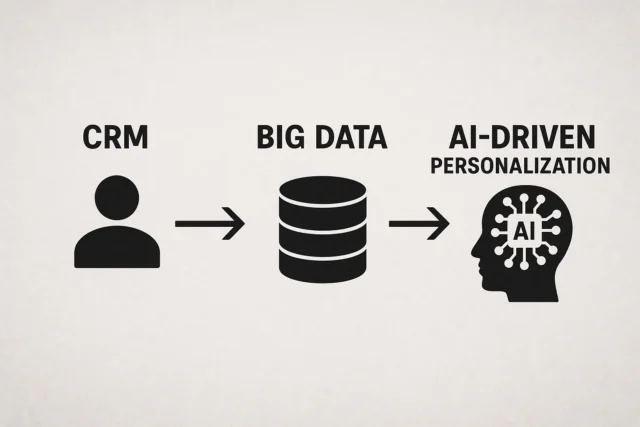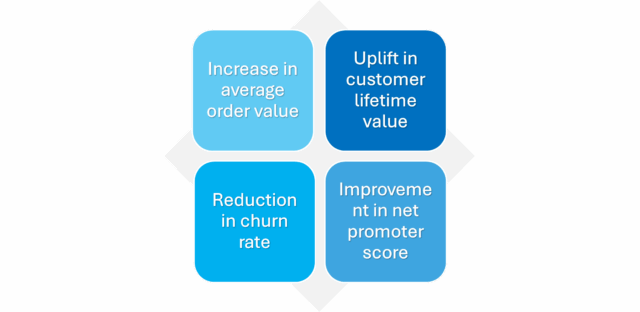Customer Experience at Crossroads: Innovation or Intrusion?
In an era where digital touchpoints proliferate, mastering customer experience is no longer optionality’s foundational. Within the emerging predictive analytics world, companies deploy advanced algorithms to anticipate behaviors and tailor interactions at scale. This raises a provocative question: is such personalization in marketing a true innovation enhancing the customer journey, or a manipulation machine quietly steering choices? One viewpoint sees personalization as a delight engine for consumers who feel understood. The other sees it as a subtle power play, exploiting data to drive outcomes. The argument here: while risks exist, technology‑driven personalization ultimately elevates customer experience, if managed ethically.
The Evolution of Customer Experience Through Predictive Analytics
The evolution of customer experience has shifted from broad segmentation toward hyper‑tailored interaction, enabled by the predictive analytics world. In earlier days marketers sent mass messages; today they leveraged machine learning and big data to anticipate individual needs. Firms such as Deloitte report that personalization involves understanding “who your customers are and what they need to deliver a personalized experience that is unique to them.” (Deloitte Italia) Predictive models extract patterns from historical behaviors to forecast future preferences. (Wikipedia) This evolution transforms the customer experience from reactive to proactive and positions personalization in marketing as a strategic lever, not just a tactic.

Predictive Analytics World: The New Frontier of Personalization in Marketing
Algorithms as Architects of Desire or Demand?
In the predictive analytics world, the tools underpinning personalization in marketing are growing more sophisticated. Dashboards now track real‑time behaviours, model purchase probability and surface tailored offers.

These tools blur the line between delight and manipulation. On one hand, personalized offers feel timely, relevant and enhance the customer experience. On the other, they may nudge behaviours in ways the consumer doesn’t consciously recognise. In their 2025 outlook, Deloitte emphasised that personalization, agility and responsible innovation will define next‑gen marketing. (PARTNER2B) Thus, while algorithms architect demand, design and oversight determine whether they empower or exploit.
Image suggestion: Dashboard screen with consumer analytics and personalization metrics
Alt text: Predictive analytics dashboard illustrating personalization in customer experience
Customer Experience vs Consumer Autonomy
Does Personalization Respect or Replace Decision‑Making?
There is a dialectic between enriching customer experience and preserving consumer autonomy. We can compare the two approaches:
Comparison: Personalized vs Non‑Personalized Consumer Journeys
| Feature | Non‑Personalized Journey | Personalized Journey |
| Message relevance | Generic | Tailored to individual history |
| Consumer control | High | Reduced—algorithm steers interaction |
| Emotional connection | Standard | Feels tailored & intimate |
| Potential for bias/manipulation | Lower | Higher if unchecked |
| Experience outcome | Predictable | Variable, can delight or discomfort |
Ultimately, personalization in marketing can enhance the customer experience when it helps individuals achieve their goals. But if the system steers too aggressively, it can undermine trust, autonomy and lead to backlash. Research shows that perceived intrusiveness weakens the positive effects of AI‑driven personalization. (Advances in Consumer Research) Thus the tension: empowerment vs influence.

The Ethics of Personalization in Marketing
When Does Tailoring Become Targeting?
One cannot ignore the ethical dimension of personalization in marketing. If the goal is to enhance customer experience, ethical guidelines must govern how data is collected, used and activated. The key considerations:
- Transparency: Is the consumer aware of how their data is used? (colordynamics.com)
- Fairness & bias: Are algorithms favoring or disadvantage groups? (arxiv.org)
- Privacy & consent: Does the data usage respect user control and regulatory demands? (ijosea.isha.or.id)
If personalization becomes a machine of manipulation rather than delight, the customer experience is compromised. Ethical design turns the system into a delight engine; neglecting ethics turns it into a manipulation machine.

Can You Scale Empathy?
Human Touch vs Machine Precision in Customer Experience
The debate here is between empathy and automation: Can large‑scale personalization truly capture human nuances? Here are the trade‑offs:
- Benefits of AI‑driven personalization:
- Delivers relevant offers at scale
- Reduces friction in the customer journey
- Boosts satisfaction and loyalty when aligned with preferences (Deloitte)
- Risks of losing human connection:
- Over‑automation can feel cold or creepy
- Algorithmic decisions may miss context, empathy or ethics
- Some firms have blended chatbots with human agents to combine precision with empathy.
Hence, scaling personalization requires both machine precision and a human‑centric ethos to preserve the richness of the customer experience without sacrificing authenticity.

Business Case for Deep Personalization
ROI, Retention, and the Risk of Alienation
From a business perspective, personalization in marketing appears as a clear driver of value. Metrics such as incremental revenue, lifetime customer value and retention improve when personalization is executed well. For instance, a case study by Deloitte showed that a firm reduced email‑opt‑out rates by 50% via machine‑learning personalization. (Deloitte Italia)
Impact of Personalization on Key Business Metrics |

However, deep personalization also carries risk: overly aggressive targeting, privacy missteps or algorithmic bias can erode trust and damage the customer experience. Strategic alignment, ethical governance and transparency become enablers of both delight and growth.
Redefining Customer Experience in a Hyper‑Personalized Age
From Mass Messaging to Micro‑Moments
In the age of personalization in marketing, the customer experience is no longer about mass broadcast, it’s about micro‑moments. Here are three key tactics:
- Micro‑targeting techniques: Identify individual preferences and trigger relevant messages in real time.
- Real‑time personalization: Use live data streams and AI models to adapt experiences on the fly.
- Context‑aware experiences: Consider location, device, time, history to tailor interaction precisely.
These tactics represent a shift from one‑size‑fits‑all to one‑size‑fits‑one. In so doing, personalization becomes less a machine of manipulation and more a delight engine. Brands that harness this shift elevate the customer experience and build competitive advantage.

Why AI Personalization Strengthens Customer Experience
In the contest between delight engine and manipulation machine, personalization in marketing finds its moral and strategic axis in the quality of the customer experience. When powered by predictive analytics, personalization scales relevance, enhances engagement and drives business outcomes. Yet its potential for misuse is real eroding autonomy, trust and ethics. The decisive factors are governance, transparency and human‑centric design. Embracing personalization not as a covert influence device but as an amplifying tool for genuine human moments ensures that technology strengthens rather than diminishes the customer experience.
References
- Personalization Strategy in Retail Media – Deloitte
- Marketing Trends for 2025 – Partner2B
- Consumer Perceptions in AI-Powered Personalization – ACR Journal
- AI and Algorithmic Bias – arXiv.org
- Email Personalization Case Study – Deloitte
- Customer Experience Personalization Strategy – Deloitte Digital
- www.h-in-q.com



